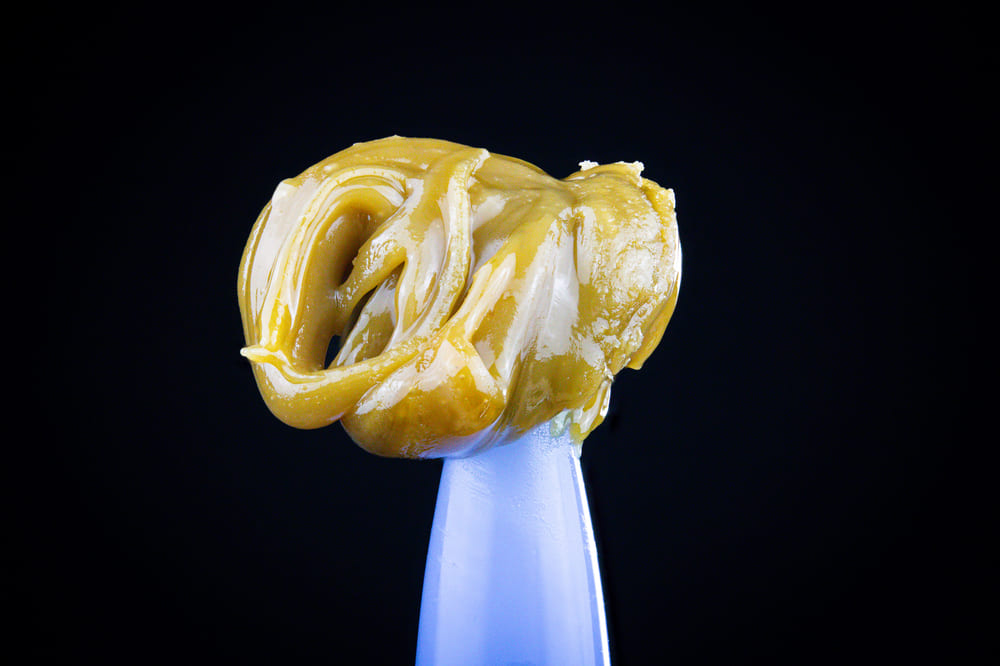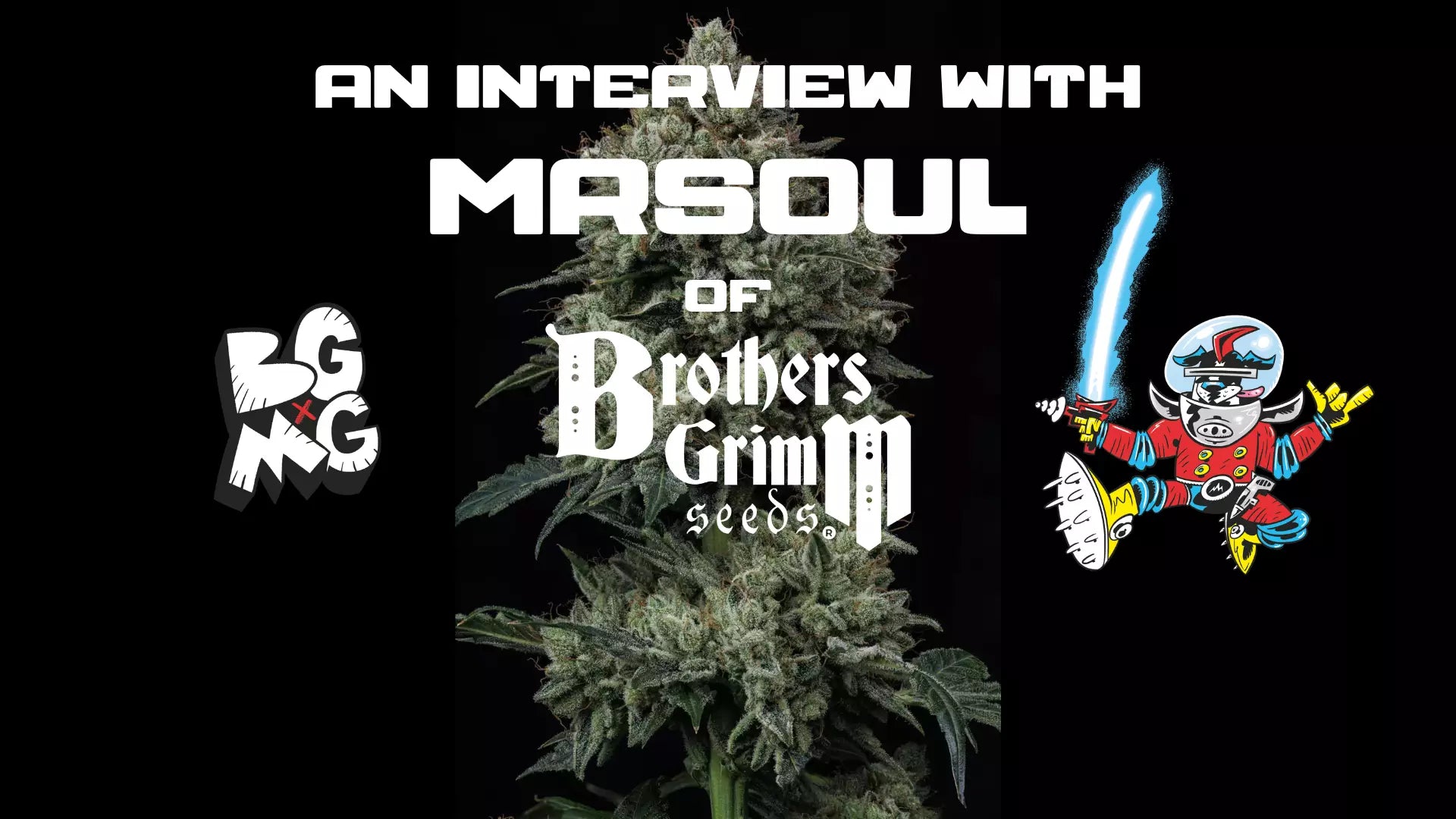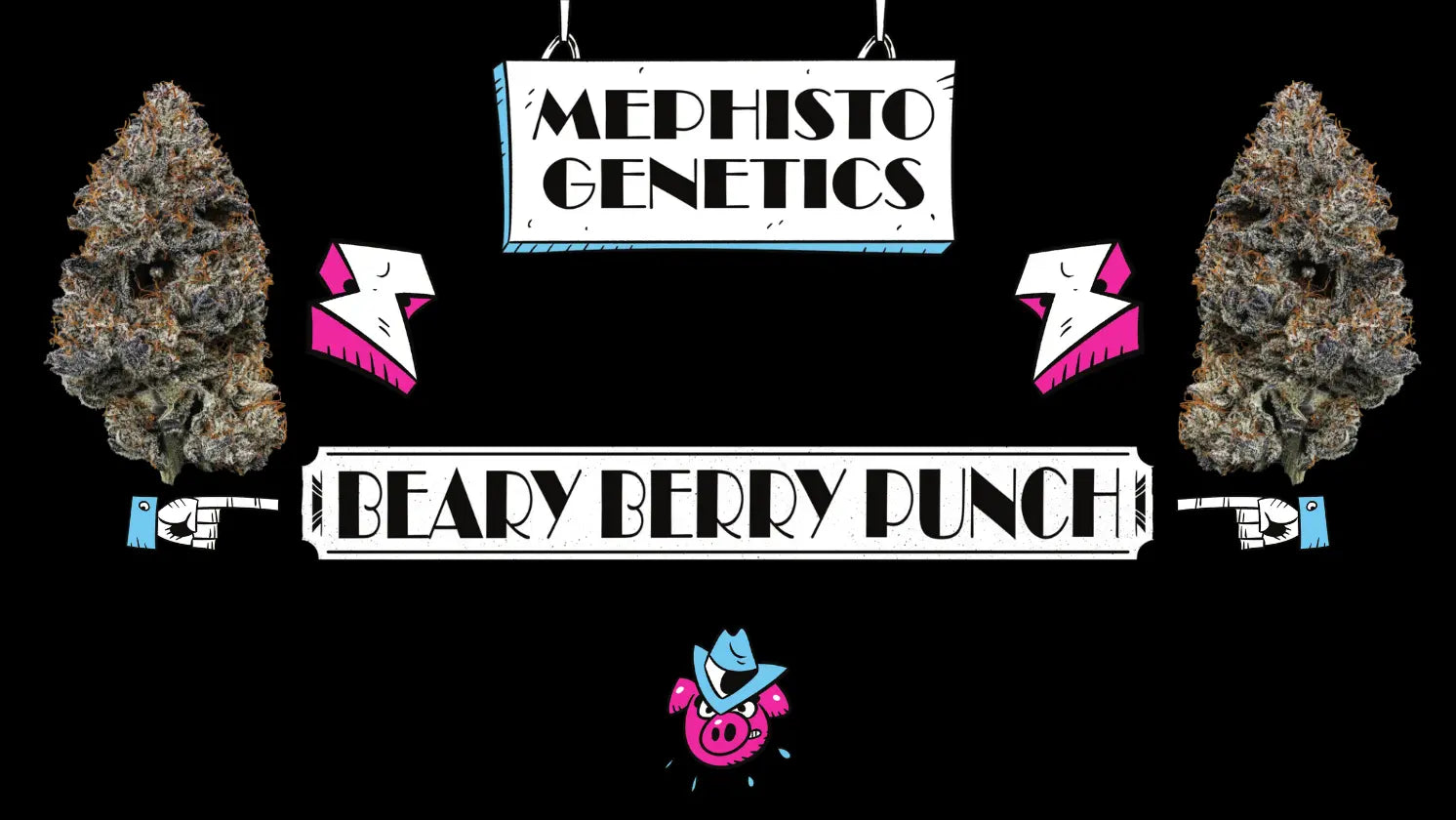Check out Jimbo's video on creating flower rosin!
As we move into the third installment of our flower rosin series, its time to talk technique! So far we have covered the history and culture of flower rosin, the benefits of using homegrown autoflowers to make concentrates at home, and the equipment required to get started. Now its time to cover the most important aspect of making flower rosin with your homegrown autoflowers and thats the process by which we actually go about turning our freshly harvested flowers into delicious dabbable flower rosin. Theres a lot to cover here, so strap in and grab your rosin press and mephisto autoflower of choice. Let’s get it!
NOTE: In this series, we focus specifically on the principles and techniques associated with making flower rosin. Stay tuned for a future series where we cover everything associated with there older cousin of flower rosin: hash rosin.

When is your Flower Ready to be Pressed?
When it comes to your freshly harvested autoflowers, you’ll want to make sure they are pressed within the optimal quality window. Typically the flower will be dry enough to be considered press ready when you feel confident it’s ready to be put into long term storage to cure. Freshly harvested flowers are going to be in their ideal press window anywhere from 10 days post harvest to about 2-3 weeks into cure. Any further and you’ll still be able to press, but there will be degradation indicated by color change and you’ll end up with a subpar product most of the time. Any sooner and the flower moisture content will be too high and you’ll press a product that is far to viscous to handle.
Hair Straightener Tech:
Hate it or love it, hair straighteners have a place in the cannon of flower rosin tech. Despite monumental advancements in rosin press hardware, this handy (and cheap) tool can still be useful, even to experienced pressers. Heres an anecdote: There is a technique in the hash world that utilizes a clear jar with some ice water to do a mini quick wash on flowers in order to determine if a strain is worth sifting (Its called jar tech). This is a great analogy for the hair straightener. Its a great alternative to loading a larger quantity into a more advanced dedicated rosin press when you are simply looking to see if a strain will yield or not.
Its not recommended to use a hair straightener to press anything more than a single nug or two. This technique should be applied as a test press only. Most, if not all hair straighteners today operate at high temperatures, even on the lowest setting. After even just a minute or two of heating up, the plates on a hair straightener will be far too hot to sustain multiple presses and you will ruin your rosin if you attempt to do so. Furthermore, when using the hair straightener, there is no filter between your nug and the parchment paper. This will create contaminants in your final product that are difficult and tedious to remove by hand.
Start by prepping your work area. Use a sheet of parchment laid across your work surface, and prepare a second sheet that is 5x10” or so. This sheet will be used for pressing. Ten your hair straightener on to the lowest setting and place your nug in between your 5x10” sheet, folding the top over your mug like a sandwich. After 30-45 seconds of preheating the hair straightener, place the nug and parchment sandwich centered on the hot plate of the hair straightener. Without waiting too long, press down on the hair straightener, making sure the nug is centered in between your plates. Put as much pressure onto the plates that you can for about 10-15 seconds before releasing. I’d recommend using a oven mitten to avoid touching the sides of the plates. Even in the first few seconds of heating, the plates are hot enough to cause a minor burn. You cannot afford to press for longer than a few seconds. If done correctly, you’ll be able to hear the light sizzle of the resin glands releasing rosin onto the parchment. Upon releasing pressure, immediately transfer your rosin to a cold surface for collection. Remember to bring a pair of tweezers or a pick to fish out and remove any contaminant large enough for you to see.
How to Press Flower Rosin with a Home Rosin Press
For those looking to press rosin beyond a single nug, you’ll want to pick up a home press (see PART 2). These 2-6ton hydraulic or pneumatic rosin presses are the perfect size and price point for home growers looking to turn their harvests into concentrates. As a step up from hair straighteners, home presses offer custom temperature settings, higher PSI, and larger plates designed for pressing greater quantities of starting material.
Heat, Pressure, and Temperature Settings
There is a balance between temperature, pressure, and press time that depends on the thresholds of the rosin press you will be using. “Dialing in” the optimal settings will not only depend on the capabilities of your equipment but will also vary from strain to strain. There is quite a bit of nuance and intuition involved in pressing high quality flower rosin. Ideally, you want to control your temperature to be as low as possible. However, the lower you go with temperature, the more pressure you will need in order to break the trichome heads open and squeeze the rosin onto your parchment efficiently.
The reason why you want a rosin press that offers 2-tons or more of pressure is because it offers a low enough temperature setting to press your rosin without degrading its quality. Higher PSI (pressure per square inch)settings allow for less heat to extract rosin. The hotter and longer you expose your flowers, the higher the probability that the secondary metabolites such as cannabinoids and terpenes will volatilize and even degrade, so its important to strive for those lower temperatures.
Here’s an example:
I use a 4-ton hydraulic dab press. I set my plates to 180F for most presses, occasionally going up to 190F, and sometimes going down to 170F. My presses are almost always 2 minutes because with my individual press, thats the maximum time I feel comfortable exposing the flower to the hot plates. The returns depreciate after that both in quality and quantity.
Suffice it to say, you’ll want to experiment with heat, and press time with your own press to figure out the settings which will work with the PSI your machine offers. Just remember, lower pressure means higher temps, higher temps means shorter press times; and visa versa.

Using Filter Bags for Flower Rosin
Its imperative that you use filter bags when pressing flower rosin with a home press. You can get away with pressing a small nug onto parchment using a hair straightener or even a modified hat press. However, pressing rosin with higher pressure allows you to use higher quantities of starting material. Anything more than a single nugget is impossible to contain without using filter bags. The purpose of these bags is to create a porous mesh barrier between your starting material (in this case, flower) and the parchment paper. This way the material doesn’t contaminate your rosin before you are able to collect it. Leaf particles, pistils, dust and debris are all left on the inside of the bag, leaving the parchment paper to collect the clean and filtered rosin.
Filter bags are almost always nylon and come in different shapes (which you’ll match to your rosin press plate sizes) as well as a variety of mesh sizes, measured in microns. As a crossover from the hash world, these micron sizes filter at a higher rate contingent on higher mesh counts (which confusingly are inverse to micron sizes). For flower rosin, you want a micron size bag that is between 90u and 160u. Lower micron sized bags (37u-70u) are more optimal for pressing hash.
Filter Bag Loading and Orientation
The way you load your rosin filter bag will depend on the orientation you wish to press it with your particular press. There are several different schools of thought when it comes to bag orientation and each one has its pros and cons. Lets look at the most popular orientation techniques.
Pillow Tech: This is the most straightforward and arguably most popular orientation to use with filter bags on a hime rosin press. With pillow tech, you are laying your filter bag flat onto your press plates, lining up the rectangular plates with the bag itself. It looks like a pillow if you think about it. Many pressers opt to use a set of pre-press molds for this orientation because you can get ones that will shape your pressed flower into a brick that fits perfectly into your rosin bags. Its posusnle to load filter bags for pillow tech without a pre-press mold, but you’ll have a much higher likelihood of creating air pockets in the corners of your bags. These pockets will pool with rosin and prevent them from crossing the mesh barrier onto your parchment, thus losing you yield.
Its important that you remove extruding stems and break flowers down to <.5” clusters when loading them into your bags or pre-press molds. DO not grind your flowers, when you do that you are eviscerating the trichomes before the heat and pressure have change to do their magic. Smaller nug clusters will press together and create less air pockets than full size nugs.
Pillow tech is not the ideal way to press flower rosin, although it may be the most popular. The flat orientation of a filter bag is far more advantageous when pressing hash due to the increase in surface area exposure. With flower rosin, having less surface area actually helps when dealing with the excess biomass that flower contains.
Bottle Tech:
If you fill a filter bag with flower without molding it with a pre-press mold or shaping your bag into a pillow, the bag itself will take the shape of a cylinder. This shape is actually more conducive to greater yields when placed vertically in between rosin press plates. This orientation is known as bottle tech because of how the bags look like a bottle when standing in a press. With this technique, folding the bottoms of the bags inward helps to create a more cylindrical shape. You do this by pinching each bag corner inward before filling. You can fill your bags up for bottle tech as high and your press will allow, depending on its threshold. You can opt to seal or not seal the top of your bag, but traditionally the corners are folded in the same way you would for the bottom of your bag.
This technique takes advantage of the decrease bag surface area contact with the plates and directs rosin outwards in an orientation that creates less pockets for material to poo before it hits the parchment paper. However there is one more technique that requires just a touch of bag modification, but works even better.
Chottle Tech: This technique utilizes the same vertical orientation and fill requirements as bottle tech with the one main difference being that Chottle Tech requires you to keep both the bottom and top of the bag completely open. You do this by cutting the bottom of your filter bag off prior to filling it with starting material as opposed to faking the creases inward like you would with Bottle Tech. With a completely open top and bottom, you almost completely take away the risk of rosin pooling, thus offering the highest yields of any bag load and orientation style.
Parchment Technique:
Regardless of your bag orientations style, you’ll want a piece of parchment paper separating your filter bags from the press plates. This gives your rosin a safe surface to stick to before you are able to collect and jar it for long term storage. The most simple way to prepare your parchment paper for a press if to measure your plate dimensions and cut a piece the can fit between the plates, covering them fully, while also being able to fold bacon and under the plates again o protect both the bottom and top plates. Think of it like a taco on its side. You’ll be loading in your filter bag through the front. There are a few ways you can cut your parchment to direct rosin flow, but most of the more nuanced tricks are for hash rosin., A simple one fold parchment should do the trick for most presses.
Rosin Collection Technique:
Once you’ve pressed your rosin, you immediately want to transfer it to a cold surface for collection. The parchment paper does a great job of helping the rosin to pool after it crosses the mesh filter barrier from the bag. Once you remove the parchment form the press, you’ll see the pancake squished baggie in the center of what looks like a rosin rorschach drawing, pop that baggie out and store the baggie under something cold until you are ready to collect it. The filter bags should keep all of the contaminant out, making your only job to get the rosin collected and into a storage safe vessel. For that you’ll need a trusty collection tool.
When it comes to collecting, dabber tools with flatheads work the best, but any titanium tool will do the trick. This is because you can pre-cool these tools and they will hold their temperature longer. Flat Ice packs work very well for rosin collection. You can store your uncollected parchment underneath while you use there top of the pack to pick and condense your golden loot. The trick to collecting is to keep your rosin cold. Warm rosin is viscous and impossible to handle.
Once you have opened your parchment on top of your cold surface, use the dabber tool to quickly pick away small globules or rosin from the parchment until it begins to pool up and create a mass on the tip of the tool. As you continue to collect, that mass will grow like a snowball and make it substantially easier to collect the rest of the material from the paper. Once you are finished, transfer your rosin ball to a jar for storage.

Check out PART 4 of our Mephisto’s Guide to Making Flower Rosin with your Autoflowers for tips and tricks on storing your flower rosin as well as rosin manipulation and post processing.
Jimbo Signing OuT!
related blogs.
Check out these other blog articles.










